Volvo has certainly taken its time developing this one, hasn’t it? To be precise, It has been 13 years since the first-generation XC90 was put into production, leaving this second-gen flagship SUV with some pretty big shoes to fill.
If or not the new model has been able to upstage its predecessor’s lasting reputation as a safe and dependable people carrier is exactly what we’re here in Gothenburg, Sweden, to find out — specifically, the top-shelf XC90 T8 Twin Engine plug-in hybrid that Volvo Cars Malaysia has tipped to become available for us. But first, a quick reality check of the model’s standing.
As the BMW X5 is known for its dynamic handling, so too is the Audi Q7 praised for its handsome styling. Likewise, the new Mercedes-Benz GLE seems a little bit preoccupied with trying to become an X5 itself, while a Range Rover would be the one you’d bet on to complete a Dakar Rally straight out of the factory, whilst offering just as much luxury as any of the above-mentioned vehicles.
Volvo’s seven-seat entry, on the other hand, has garnered for itself the reputation of being the safe bet, in the most literal sense of the term, for all its occupants, and even those around it. Its ground-breaking developments in that area has paved the way since 2002 for other models to copy and catch up.
Naturally, they all have — Volvo may have developed many industry-firsts for its XC90, with one example being a Roll Stability Control system it introduced in 2003. Today, it’s not surprising that several versions of similar systems and more have crept into the market and become available on its fiercest competitors.
Which leaves the latest-gen XC90 we’ve come to review here with not only the big shoes of its predecessor to fill, but also a mountain to climb against its revolutionised peers. But this is Volvo, and if recent times have anything to add, it’s that the Swedish car maker has developed a “Midas touch” for itself, riding on a liberating wave of newfound Chinese backing, under the financial stewardship of car maker Geely.
One of the many highs of this liberalisation can be seen in the form of its brand new platform for which the latest XC90 is built on. Dubbed the Scalable Product Architecture (SPA), Volvo’s engineers were able to give its latest model a level-up by not only making it larger, but developing it around what they’ve studied to be the interests of the brand’s customers — a philosophy Volvo stands firmly on, despite all temptations to ignore “purpose” and pursue any generous government incentives for specific vehicle characteristics.
The second-gen XC90 is longer (by 143 mm), wider (by 72 mm) and lower (by 8 mm) than its predecessor – measuring 4,950 mm long, 2,008 mm wide, and 1,776 mm tall. On top of the new dimensions that make for a more spacious cabin, the new XC90 is also lighter than the model it replaces (up to 125 kg, subject to variant), contributing to better fuel efficiency, improved performance, and a more manageable ride.
Make no mistake, the term “Twin Engine” is not for nothing — this variant of the XC90 comes equipped with two sources of power: a 320 hp/400 Nm Drive-E 2.0 litre super- and turbocharged four-cylinder engine, and a rear-mounted 87 hp/240 Nm electric motor. Volvo claims that its combined total system output is good for 407 hp and 640 Nm of torque.
The sum of the of T8 Twin Engine’s power is split between the front and rear axles via a hybrid all-wheel drive system — the petrol engine delivers its 320 hp to the front wheels, while the electric motor delivers its 87 hp to drive the rear. For an added boost from standstill, there’s also a 34 kW/150 Nm crankshaft-mounted starter generator (CISG) positioned between the engine and the transmission.
A rectangular-shaped 9.2 kWh lithium-ion traction battery is positioned in the central tunnel of the vehicle, and requires just 3.5 hours to be charged from empty to full over a 230-volt, 10-amp power supply, like we have available in Malaysia. Having recited the figures for you, let’s take a look at what that brings to the road.
The XC90 T8 is capable of sprinting from 0 to 100 km/h in just 5.6 seconds, and we don’t doubt that possibility in reality. It’s impressive how the seven-seater is capable of lunging forward with such urgency when when you consider that the bulk of the vehicle’s power is supplied by a 2.0 litre four-pot petrol engine.
Dismiss the relatively humble engine displacement in the XC90 and you will regret judging this book by its cover. The T8 is aggressively quick off the line, but soon after, settles nicely into more refined power delivery once through the initial gears.
The petrol engine is smooth, and presents a very linear throttle response. Clearly, this 2.0 feels a lot more capable than what its numbers alone suggest, and we suspect that the smooth-shifting Aisin-sourced eight-speed torque converter automatic transmission and its short ratios in the initial cogs has a strong influence on the car’s torquey dashes — not forgetting the 640 Nm at your disposal.
Fuel consumption is rated at 2.1 l/100 km (based on the European NEDC test cycle for hybrids), and it isn’t too far off from our best attempts at keeping efficiency a priority. Expectedly, you will have to significantly feather the throttle, and work the available drive modes to your suit your preferred efficiency outcomes.
Speaking of drive modes, there are five of them available to help you get the most out of your XC90’s going – hybrid, pure electric, power mode, AWD, and save. In “hybrid” mode, the XC90 employs a power strategy that automatically alternates between drawing power from the petrol engine and the electric motor, depending on what it anticipates your driving objectives are at the time — be it power, or efficiency.
In “pure electric,” the car relies solely on its electric motor for forwards propulsion. With a fully-charged battery, Volvo claims that you can get a driving range of up to 40 km before depleting the charge. Again, it’ll take a significant amount of discipline to achieve this in the real world, but it’s all the same for other PHEVs that claim similar capabilities. Should you need more power from this mode and stamp the throttle harder, the petrol engine will still kick in to boost you along.
In “power” mode, you get what you expect: maximum power from all available reserves. Using the “AWD” mode expectedly forces the XC90 to maintain its all-wheel drive power delivery as best as it can — maintaining the proposed state for as long as there’s charge left in the traction battery.
To save up on power, the “save” mode is available to prevent the vehicle from drawing energy from the lithium-ion cells, allowing you to save the pure electric range for a later point in your journey. However, it is only capable of recharging the battery to quarter-full, which if you’re not careful with later on, depletes very quickly indeed.
Personally, we found that leaving the XC90 T8 Twin Engine in its default “hybrid” mode is good enough to gain you all the benefits of low emissions, low fuel consumption driving, whilst allowing the car to react in a natural way to your throttle inputs — unleashing the powertrain’s max capacity when needed, or reverting to full electric power when efficiency is preferred.
Just like its comparable PHEV models, it’s not the easiest job in the world to maintain high battery charge levels in the XC90. Beginning our drive with a full charge, you do get to explore things like the vehicle’s full 43 km electric range or the car’s 407 hp/640 Nm total system output, but if your drives last any longer than 30 to 40 km, you will struggle to get the traction battery back to half charge, even, whilst on the move.
Still, that’s pretty impressive considering that this is in fact a large SUV which doesn’t compromise its position by relying on performance-compromising low rolling resistance tyres, and what have you.
If you insist on being picky, you could argue that Mercedes-Benz has demonstrated that the Swedes still have a thing or two to improve on, having taken its PHEV technology, as available on the C 350e and S 500e for example, one step further by incorporating GPS and camera/radar-based data into its operation, expanding on the car’s intelligence in decision making for when and where to best designate either electric or petrol power, based on the prevailing terrain, traffic and route selected. The XC90 leaves those decisions purely in your hands.
Where maintaining accurate throttle pedal pressure is concerned, again, Mercedes-Benz PHEVs lead the way with their haptic foot pedals that give drivers more awareness and control over their driving. When in full electric mode, Benz’s haptic pedals issue gentle vibrations to notify drivers of which point any further pedal depression would result in the petrol engine firing up. With the knowledge, drivers can more actively decide between backing off the pedal and remaining in full EV mode, or continuing to depress the pedal and get a power boost from the petrol engine.
What the Volvo does have going for itself is an additional selectable gear position — where conventional vehicles typically have the P, R, N and D (park, reverse, neutral, drive) options, the XC90 has an extra “B” (Brake) position which basically further encourages energy recuperation by increasing the amount of engine-braking under off-throttle instances.
When the “B” position is selected (can be done anytime), the battery does noticeably charge back up at a quicker rate, but do expect much shorter off-throttle coasting distances. The mode is a nod to a similar feature found in Volvo’s C30 DRIVe electric vehicle — the first modern, full electric Volvo, which itself had a “H” position (Highway) on the shift gate.
Quite the opposite to how it works today, the 2011 C30 Electric in its “D” (drive) gear would feature the heavy engine-braking characteristic by default, while selecting the “H” position (Highway) would allow the car to roll freely. The XC90 T8 Twin Engine’s “D” gear keeps the car rolling at a natural rate, while actively selecting “B,” located beyond “D,” would activate the aggressive energy recuperation and engine braking strategy.
However, it should be clarified that the XC90 T8 Twin Engine requires no special treatment beyond your regular duties with a basic fuel-powered vehicle. As mentioned, the vehicle is capable all on its own of regenerating energy back into its traction battery, without you ever needing to physically plug the vehicle into a charging socket — negating any issues surrounding lacking infrastructure where you live.
Likewise, the advantage of at least having a wallbox charger in your homes can make a significant difference — should your regular commutes be short, you could theoretically run on pure electric mode indefinitely, so long as you are disciplined enough with the throttle pedal, and don’t drive more than 30 to 40 km a day.
The one inevitable inconvenience (for Malaysians, especially) is that the XC90 is unavoidably a very large vehicle. As if the last one wasn’t tricky enough to navigate around a tight parking lot, this one promises to be all the more difficult, given its overall growth spurt.
Fortunately, surrounding visibility isn’t any sort of a hassle. You may not realise it at first, but the square shape of the XC90’s body paired with good driver positioning helps outward visibility tremendously. The low window line, narrow A-pillars do lots to keep your view unobstructed, while there is of course a Park Assist Pilot with 360 degree Surround View camera to guide you.
Improving its manoeuvrability is a steering rack with a smaller turning circle over the previous model, we’re told, but some adjustments had to be made for XC90s fitted with the optional 21-inch wheels like the ones you see us driving on here. Still, the newfound agility of the car was clearly apparent, especially as we kept missing exits on Gothenburg’s streets, and the occasional sedan-like U-turn was necessary.
Find yourself with a few open roads to explore, and the ride comfort is far from poor (even with those 21-inch wheels on), but we figure that the combination of the smooth Swedish roads here and the optional “Four-C Active Chassis (four-corner air suspension) equipped on this car has a lot to do with complementing that point – as standard, the XC90 gets a multi-link front suspension and a clever transverse leaf spring rear suspension design that is similarly used by the Jaguar XE and the new Corvette Stingray, mind you.
There is a certain firmness to the ride, but we’ll have to wait and see how the air suspension handles on our rougher Malaysian roads before making any further locally-relevant assessments.
Noticeably subtracting from the XC90’s luxury experience was a degree of exterior noise that seeped into the cabin — it wasn’t enough to completely turn us off, but certainly enough to keep us constantly aware of our surroundings. At speed, it’s clear that the XC90’s engineers wanted very little to do with fast corners. So, attempting any kind of brisk cornering and you’ll discover lots of lateral roll, and nearly zero confidence to keep up the solid speeds.
Clearly, the XC90 was made for being better in other areas of its being — especially so to stay in line with the Swedish car maker’s ambitions of having no one killed or seriously injured in a new Volvo by year 2020. If you insist on the mad business, the BMW X5 is probably the seven-seater you want.
Likewise, this writer would recommend leaving heavy off-road work to the likes of the Range Rover and its intelligent full time four-wheel drive capabilities, primarily because while you do get an 87 hp/240 Nm electric motor driving the rear wheels of the XC90, this plug-in hybrid T8 Twin Engine variant is still largely a front-wheel drive-biased, designed to be a safe and friendly people carrier. The hybrid all-wheel drive configuration will help you through light off-road excursions by providing some power to the rear-wheels, but it would be unfair to expect too much out of what it plainly is.
Focusing on the cabin itself, it’s hard to imagine any other vehicle in the XC90’s class topping what’s on offer here, for sophistication, style and quality. It would be easy to brush this off as just a minimalist, Scandinavian ensemble, and you wouldn’t be wrong — just a little bit undermining of the craftsmanship and artistry that’s clearly gone into creating this space.
The XC90’s designers did away with almost all the typical switchgear you’d find on a dashboard’s front fascia, leaving behind no more than just eight switches and the large nine-inch vertically-positioned tablet-like touchscreen for which the rest of the car’s controls can be displayed.
The multifunction steering wheel has buttons for the cruise control on the left spoke, while the buttons on the right give you control over the 12.3-inch full-LCD digital instrument panel’s menus and voice control system. Do note that it’s only because the vehicle we’re driving is the top-shelf Inscription variant that we get some of these options. In the base-spec XC90, for example, the instrument panel is a more basic dual binnacle arrangement with a small LCD screen in the middle.
There’s also a very handy head-up display system which offers the typical array of navigational and speedometer readings. What becomes more noticeable as you fumble and fiddle with the XC90’s interior is that while it all appears so “minimalist,” there’s actually a very impressive list of premium features.
The centre console is split right down the middle: the half closer to the driver features the crystal glass gear knob from Swedish glassmaker Orrefors, and a diamond-cut engine start-stop button and drive mode selector (Inscription variant only). The remaining half slides open to reveal a deep and slotted pocket that will grip two cups, has a 12-volt power socket, and additional room between the two areas for further storage.
While they do look gorgeous, the positioning of the engine start-stop button takes a bit of getting used to, while the drive mode selector is located far too rearward to easily make switches from Hybrid to Power modes on the fly.
The centrepiece of the XC90’s interior, its nine-inch tablet-like touchscreen display, has an intuitive but unique interface logic — it took us no more than a minute to fully grasp the concept and become pros ourselves. Touch sensitivity is as good as any of today’s top smart phones.
Every inch of the car’s controls is accessible within the nine-inch “control panel,” and it rarely ever takes you more than two swipes to get from point A to point B, or C, or D — literally, it’s just two swipes to go from the navigation display to adjusting the head-up display’s angle.
The 1,400-watt, 19-speaker Bowers & Wilkins sound system was another major highlight, one at the optional expense of 2,415 euros (RM11,500). The much talked-about recreation of the Gothenburg Concert Hall’s acoustic experience is something we had to try, and did so first with the Edgar Winter Group’s “Frankenstein” at top volume. Needless to say, we could’ve sampled the system with something a bit more intellectual, but the sheer depth of quality clearly isn’t bound to any specific type of music.
I’m personally no audio extraordinaire like my colleague Anthony, but it’s obvious that regardless of what type of music you fancy, Arctic Monkeys or Enya, you can’t go wrong with the B&W sound system.
Apart from its masterfully minimalistic techno-wizardry, the XC90 is also impressively designed where spaciousness and interior comfort is concerned. The seats appear questionably slim at first, but Volvo tells us that they offer loads of spinal protection during a crash.
And despite their appearance, the seats are remarkably comfortable in every row — yours truly even managed to piece bits of this review together from the second row, very comfortably while my driving partner took the wheel. Leg and shoulder room is exceptional in the second row, and the centre tunnel that would typically take away proper legroom for an adult seated in the middle of the bench isn’t tall enough to cause the same problem — instead, it makes for a decent foot rest.
The third row surprisingly accommodated my six-feet-tall, overweight self. Getting into the rear-most seats wasn’t that difficult either — a simple fold and slide of the middle row seat, and there was just enough room for me (much more so for the average Asian-sized person) to step in comfortably and manoeuvre into position. There’s also enough space under the middle-row seats to slide your feet under once seated.
The second-row seat bench is a 40:20:40 split-folding type, which as mentioned, can be slid forwards and backwards (individually) to balance seating space between the two rows of seats. The middle portion of the second-row seat bench features Volvo’s popular booster seat for younger passengers.
There’s also a dedicated dual-zone air-conditioning system back there (depending on specification), with a very impressive-looking digital display on the centre tunnel with excellent touch sensitivity. Pity, there’s just the one 12-volt power socket for the middle row — a USB port or two would have been nice.
With all seats upright and in usable position, the XC90 has a total of 436 litres of boot space behind the third-row seats, while folding the third row flat increases that total to 1,183 litres. With even the middle row folded, there’s a staggering 2,426 litres of usable cargo space.
Accessing the cargo space is also made easier if your XC90 is equipped with the optional air suspension — you get an additional button in the boot that allows you to lower the rear ride height, making loading items easier. The one design that Volvo did leave behind on this second-gen model is the split-opening tailgate — the new XC90 gets a one-piece arrangement.
Cards on the table, and it’s apparent that the Volvo XC90 isn’t your best bet as a large-SUV to go racing around the Nurburgring with, nor does it score top marks for being the best off-roader in the class. But what the Swede lacks in outright handling and 4WD capabilities, it makes up for with fantastic design (inside and out), choice materials and being a great all-rounder.
To answer the question of if or not the new XC90 has managed to outdo its old self’s “shock and awe” arrival to the industry, we think yes, there’s no question about it honouring past glory, and once again setting the next benchmark for the segment.
Volvo Car Malaysia has officially launched its new XC90 T8 Twin Engine plug-in hybrid here with a price tag of RM453,888, OTR without insurance. Unveiled as a CBU unit from Sweden, VCM has also confirmed that local assembly of the new XC90 is underway, with CKD models set to hit the market in the second or third quarter of 2016.
The locally-available XC90 is specified nearly identically to the test unit you see here, except for the 1,400-watt Bowers & Wilkins sound system which is replaced by a 10-speaker 330-watt system. Check out our launch report for full details of the XC90 in Malaysia.
Looking to sell your car? Sell it with Carro.

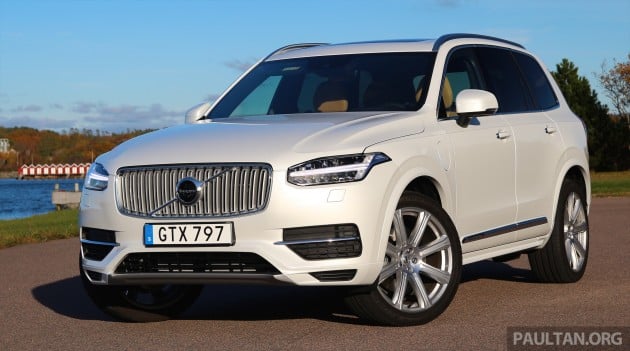








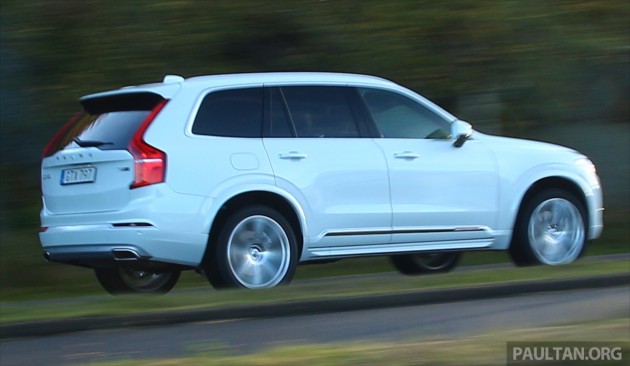
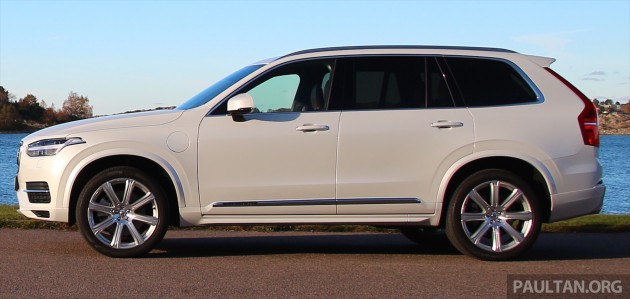



























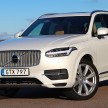
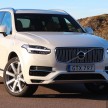
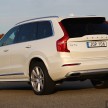
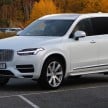
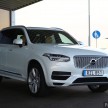
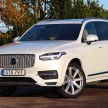
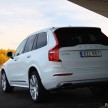
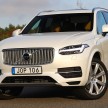
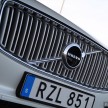
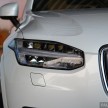
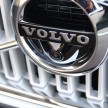
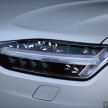
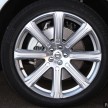
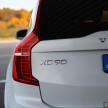
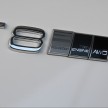
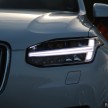
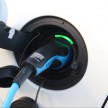
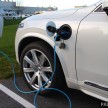
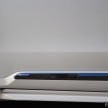
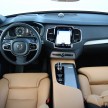
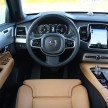
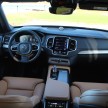
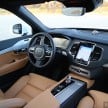
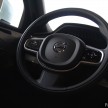
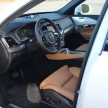
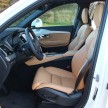
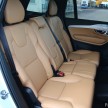
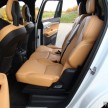
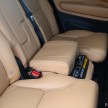
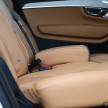
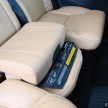
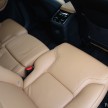
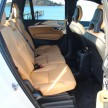
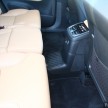
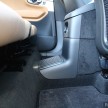
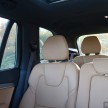
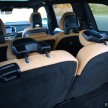
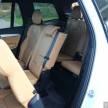
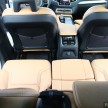
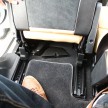
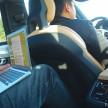
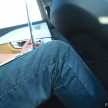
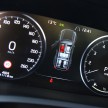
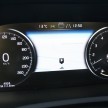
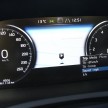
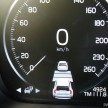
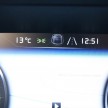
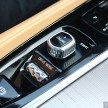
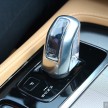
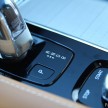
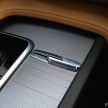
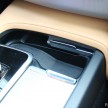
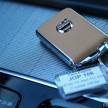
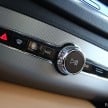
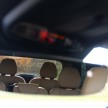
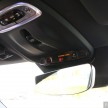
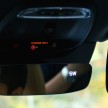
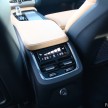
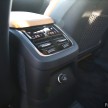
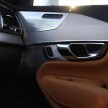
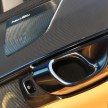
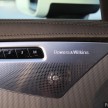
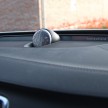
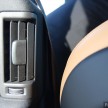

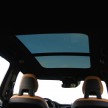
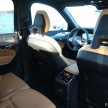
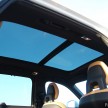
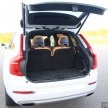
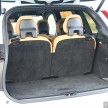
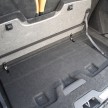
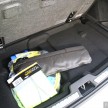
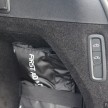
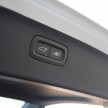
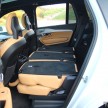
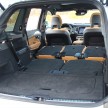
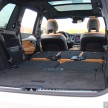
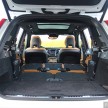
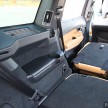
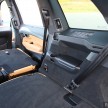
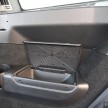
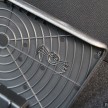
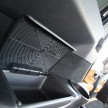
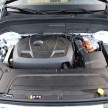
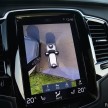
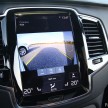
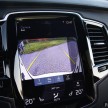
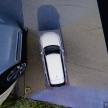
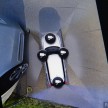
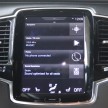
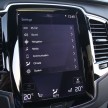
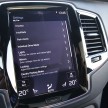

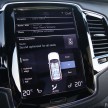
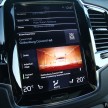
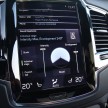
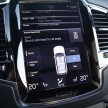
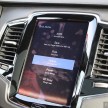
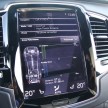
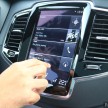
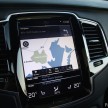
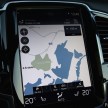
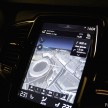
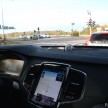
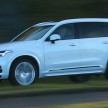
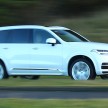
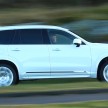

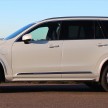
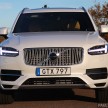









Volvo is one of the safest brand in the world no doubt. But this brand is dying in this country. Which means most of the Malaysian still prefer better appearances, attractive features like big screens, leather seats, LED and etc. But all these features will get bored after owned the car for about 3 months just simply because get used to them. Active safety features are the most important than those ‘visible’ accessories. Once the person died or badly hurt then that’s it. So for those who want buy a new car, always check their safety features first instead of those unncessary things like paddle shift, big screen, leather seats, body kits, etc.
Sorry, i still prefer my optional skirting, big screen and DRL on my cerato. Im still wet when i looking at it.
getting when wet looking at cerato..
your aspiration is pathetic
Wah…do you actually test drove it at Sweden? Or reports from the driver?
volvo lost track under ford ownership. volvo lost sales not only in malaysia but everywhere else. geely is changing things, volvo is on the way back.
Hope so. Its nice to see more innovative cars on our roads.
318 + 82 BHP = 407???
gor hybrid engine (fuel electric), you don’t simply add both hp to get max hp
Buy it 10 years later, will only cost u RM50k. Or 5 years later for only RM180k.
You noob .
Five years later the owner buys a nicer newer model. Resale value be damned for these people. Why do you worry on their behalf?
I hope you are still around 10 years later to enjoy this car…
Volvo car is very good but I had bad experience in Malaysia branches. I dont think that the person that work inside is really friendly and helpful. As i tried 2 different places which let me so disappointed in it. The car itself is pretty solid and quality. but unfortunately, sales person or service is not really nice. I hope that they will improve on this and make the Volvo market better (:
500k i would buy this in a hearbeat,
thanks to CHINA for buying over Volvo. Now they have MOOLAH to build good cars
Having driven my dad’s older XC90 V8 (imported into Malaysia) and the new T8 hybrid in Australia (I live here now), I’ve to say that the top-spec T8 Inscription really exceeded my expectations (comparable to the Audi Q7 or the BMW X5).
Plus, I also feel much safer with a reliable automatic braking system (5th Gear tested Volvo’s systems with other European ones – and Volvo topped them all). Besides, Volvo is known for its safety.
It’s lovely. But knowing Malaysia, the price would be exorbitant. The price is already bad enough here because of the luxury car tax in Australia.
on the contrary xc90 in malaysia is given tax exemption so its cheap compared to its rivals like bmw x5 or audi q7.
XC90 Hybrid > Q7